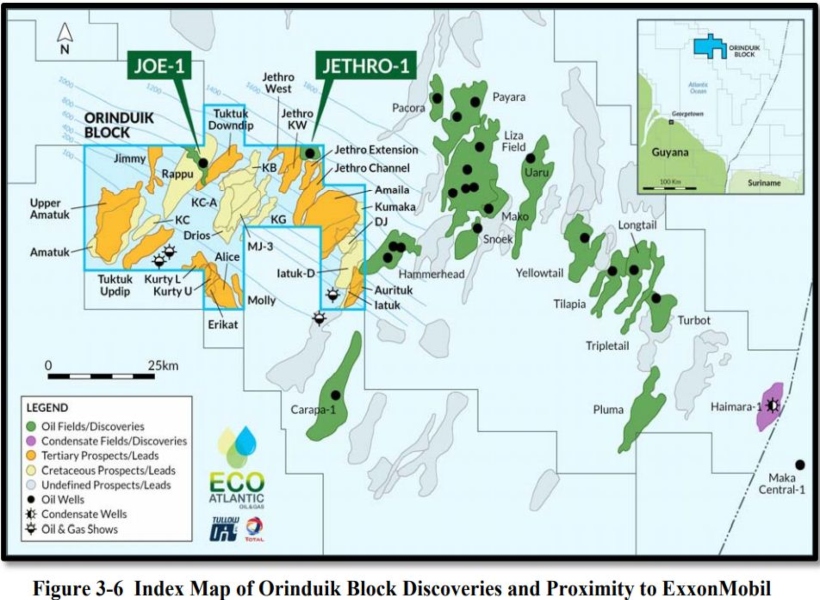The February 2020 Competent Person’s Report (CPR) that was commissioned by Eco Atlantic Oil and Gas notes that the two heavy oil finds in the Orinduik Bock are similar to ExxonMobil’s Hammerhead discovery.
The report specifically states that the oil from Jethro and Joe is reported by Tullow, the operator, to be similar to the ExxonMobil Hammerhead oil, in the 12o to 15o API range although a Final PVT (Pressure Volume Temperature) analysis has not been provided by the operator at the time the report was being done.
In addition, the CPR said that the Repsol Carapa 1 well (in the Kanuku lock) located less than 40 kilometers southeast of the Hammerhead area and 55 kilometers south of the Jethro well has discovered 27o API oil in the Cretaceous play. It further noted that unconventional oils – mainly heavy oils, extra heavy oils and bitumens – represent a significant share of the total oil world reserves while noting that oil companies have expressed interest in unconventional oil as alternative resources for the energy supply.
The CPR said that these resources are composed usually of viscous oils and, for this reason, their use requires additional efforts to guarantee the viability of the oil recovery from the reservoir and its subsequent transportation to production wells and to ports and refineries. It was noted that the use of diluents such as diesel oil can aid in the producibility and marketing of heavy oils.
The Orinduik license was awarded in January 2016 to Tullow and Eco Atlantic for an initial term of four years in which the work obligations were to review the existing 2D seismic data and by the end of the fourth year acquire and process a 3D seismic survey over the area of interest. The partners, to date, have fulfilled these obligations and in addition, have drilled two wells.
Understanding API readings for oil
API gravity is a commonly used index of the density of crude oil or refined products. API stands for the American Petroleum Institute, which is the industry organization that created this measure.
A crude oil will typically have an API between 15 and 45 degrees. Higher API indicates a lighter (lower density) crude. Lower API indicates a heavier (more dense) crude. Generally, lighter (high API) crudes are more valuable because they yield more high-value light products when run through a refinery. Light crude is typically in the 35-45 API range.
Crudes lighter than 45 are typically considered extra-light crude or condensates and are valued lower than light crude because they contain a lot of light ends such as propane and butane. A medium crude is in the 25-35 API range, and a heavy crude is in the 15-25 API range. Anything below 15 API would be considered an extra-heavy crude.( See link for further information https://www.mckinseyenergyinsights.com/resourc/refinery-reference-desk/api-gravity/)











